This November, Zazzle Media, Stickyeyes and Reprise Digital hosted a full day of webinars!
The content on the day ranged from Voice Search, and multi channel marketing, to user emotions! But don't worry if you missed it, you can find all the recorded webinars saved on our BrightTalk channel, Straight Talking Digital Marketing.
But here is one of our webinars, on how to use content to break into the first page of the search results, accompanied by the transcript. Watch now, and plan a smarter content and search strategy for next year!
Webinar
Listen on demand here: https://www.brighttalk.com/webcast/16065/342948
Transcript
As an SEO, I’ve always seen content as one of the most valuable assets that we have in our arsenal, but is often not given the TLC it deserves.
Google has always been an advocate for strong, relevant and quality content.
We can see that over the years through algorithm updates that content reigns supreme and it always will. Since the phenomenal Hummingbird update, we as SEOs now have to understand user intent on a much deeper level than we’ve ever had the need to.
With conflicting information often being the norm for Google employees when it comes to demystifying the true ranking factors, it means that we need to view Google’s guidelines as just that: guidelines.
If you treat Google’s word for gospel without creating your own tests and collecting your own data, you’re likely to be left behind. Use Google as a reference and then have the confidence and patience to implement your own strategies.
Innovate, test and scale.
So, let’s move onto auditing, optimising and creating depth in our content.
Finding opportunity in your content
It goes without saying that you should already be doing basic on-page optimisation - remembering to focus on:
- Meta titles
- H1, H2, H3 hierarchy and structure
- Meta descriptions (yep, these too!)
- Keywords
Getting these basic elements right first, allows you to define what your page is about from the beginning stages of your content strategy.
Choose your focus page
Your focus page is a key landing page on your site which has business and search value.
Finding that balance between strategies solely for the purpose of search and meeting business objectives is an incredibly important skill to have.
And one that needs to be focused on.
Your focus page for content optimisation needs to be within a close proximity to page one. The idea is that we want to surge any rankings currently stuck on p2 and propel them into the first page of the SERPs.
Pick your head keyword
This is a simple one.
You can plug your URL into a tool like Moz, Ahrefs or even use Google Search Console.
Find the keyword driving the highest search volume and use that as your head keyword. This might be a long-tail phrase with only 200 searches per month, however, if it’s important to your business, then it needs to be in Google’s top 10 results.
Use a smidgen of common sense here. If the keyword with the highest volume is a generic phrase completely unrelated to your business, then this isn’t the route you need to go down.
Remember, quality over quantity.
Okay, now that we have those basic on-page SEO elements established, our first step is understanding TF-IDF.
TF-IDF - what the heck is it and how does it work?
As with anything in the world of search, names often make strategies appear more complicated than they actually are.
TF-IDF (term frequency x inverse document frequency), in simple terms, is Google’s way of establishing how relevant and in-depth your content is based on mentions of certain keywords in comparison with a collective data-set (or documents); other websites.
That’s it.
So the idea here is that you find what your content is missing. This is part of the auditing process.
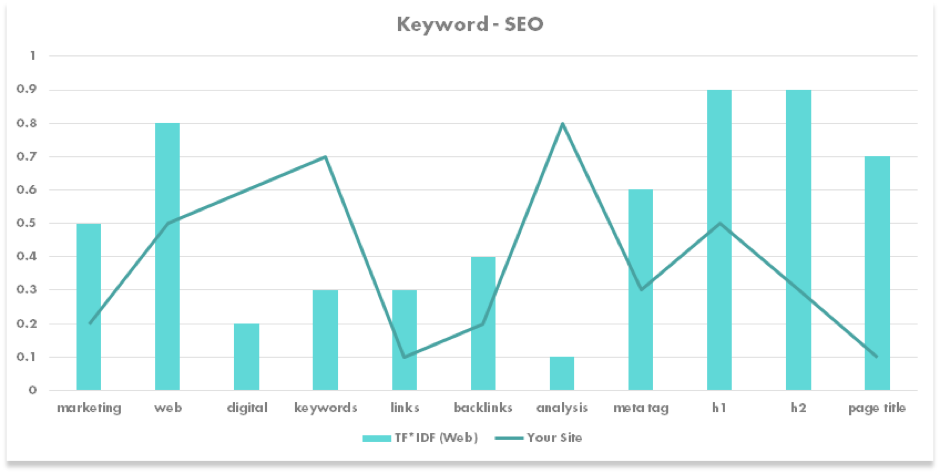
The graph above represents the TF-IDF score for an article around SEO.
Really quickly, you can see where my content is lacking and where it’s possibly a little too close to being keyword-stuffed.
You then use this to weave keywords into your content, whether that is sprinkling a few more mentions of the phrases ‘backlinks’ and ‘marketing’ could help close that relevancy gap.
Who would’ve thought optimising keyword density was still a thing? That died out years ago, right?
Clearly not.
Using Ryte to find your TF-IDF score
For establishing and comparing your site’s keyword relevancy, I use Ryte.
A nifty little content optimisation tool.
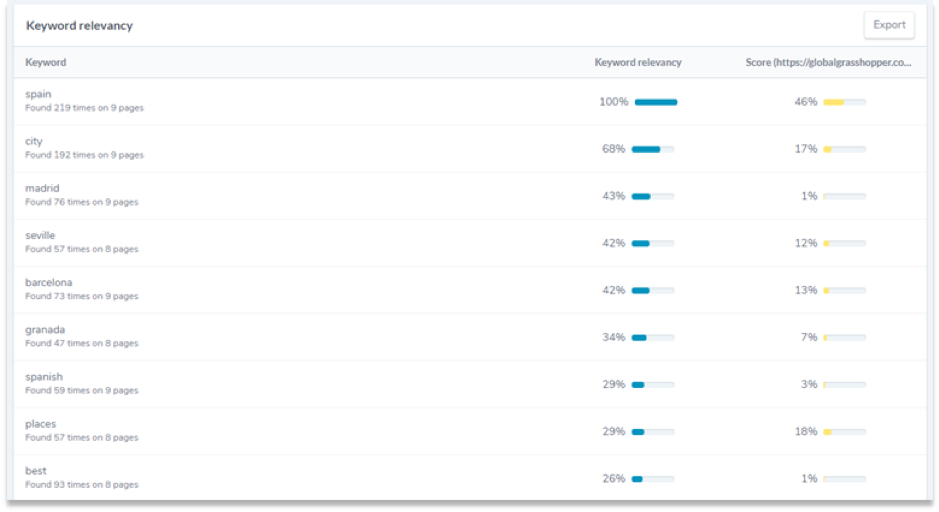
It shows you, at a very quick glance, where your quick wins are. You can set the report to compare keywords or keyphrases; it depends on what you’d like to see!
Get an average word count of your competitor’s content
Now we’re getting somewhere.
We have our focus page, our head keyword and the areas of our content which we need to optimise.
Finding the average word count is easy. You can install a Chrome extension and highlight on-page content to show you how many words are on the page (ignoring navs and ads).
Then take this data and put it into an Excel sheet to visual the data for easier analysis.
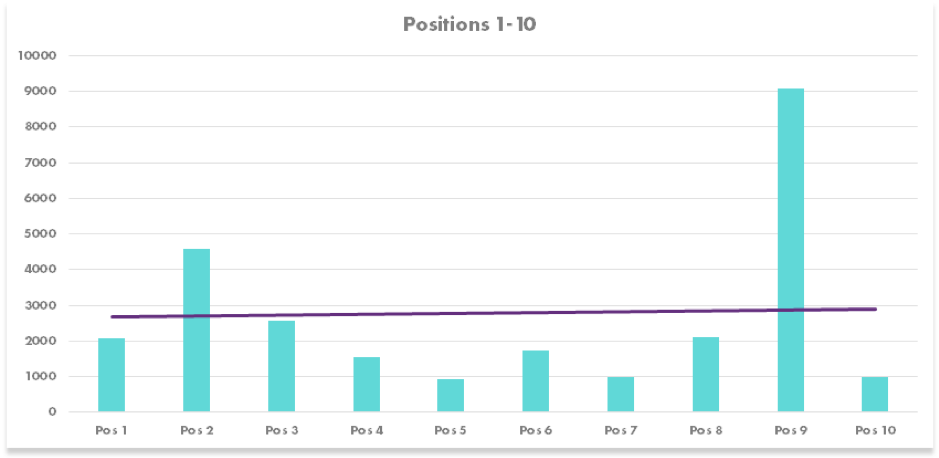
You can see that a higher word count doesn’t mean a higher ranking.
Consider your opportunity based on brand strength, domain authority, search longevity and freshness of content.
Word count is very subjective to your niche and industry. Make sure you don’t overcook your content trying to replicate other industries.
Avoid cannibalisation
The main downfall of optimising content is that you can often overlap targeting based on what keywords you need to include within your content.
A really key way to ensure this doesn’t happen is to remember the basics.
As long as you have focused your targeting for each landing page correctly and you’re not overdoing it with your keyword mentions, you should be fine.
However, as a precaution, I suggest you use a tool like AccuRanker or Ahrefs to monitor the ranking URLs to make sure fluctuations aren’t being caused by 2 URLs competing for the same keyword.
Content SILOs
This is one of my favourite content strategies: content SILOs.
In short, a content SILO is created by grouping related content to establish a website’s keyword-based topical areas or themes.
A content SILO will typically aim to funnel topical relevance to a key-landing page. If your main landing page is about tents, then your SILO could consist of content like ‘the best places to go camping’, ‘the best sleeping bags to stay warm’ etc.
There are 2 types of SILOs which work well.
Parental SILOs
A parental SILO should be our bread and butter.
It’s a way of creating a clear hierarchy through clear and structured URLs.
Clean URLs are both user friendly and create a sense of logic for Google’s crawlers. I mean, as smart as Google are, they definitely don’t mind when we make their job easier for them.
So, for a travel site, let’s say Thomas Cook, a clean parental SILO would look something like this:
https://www.thomascook.com/holidays/spain/tenerife
Easy to understand, easy to navigate, easy to crawl.
Relationship SILOs
Slightly more complicated but achievable nonetheless.
The aim is here to create as many links between topically relevant pieces of content as possible to retain and funnel link equity.
We do this through internal linking.
Thinking about how we can incorporate internal links from one piece of content to another using body links. Creating connections to form topical clusters.
For pages about ‘Spain’, my cluster may look like this…
- Spain Holidays
- All Inclusive Spain Holidays
- Family Holidays in Spain
- Great Activities to Do With Your Kids in Spain
- When is The Best Time to Visit Spain?
And you then take those pages, some are converting landing pages, and some are supporting content and you build horizontal and vertical links.
Important to remember: you need to test strategies as you execute them. Don’t assume a blanket method will give you the results that you need because it won’t.
Test, retest and then test again.
If you don’t, you run the risk of thinning PageRank, exceeding an acceptable number of internal links per page and diluting value at deeper click-depths.
And now…
Anchor text optimisation
If I mention the word ‘exact match anchor text’ to SEOs they recoil in horror.
And for good reasons.
The Google penguin update destroyed a lot of site’s traffic and rankings who had been manipulating exact match anchors through their backlink profile.
And whilst that black-hat strategy should’ve been punished, it doesn’t mean that you can’t find a healthy balance of internal anchor text that can be aggressively targeting your landing pages.
Vary your anchor text
Whilst we can be aggressive with focusing your exact match anchor phrases, it’s key to add variety to your strategy.
Use a mixture of phrase, blended, branded and natural anchor text alongside a weighted exact match strategy.
It’s a fine art of finding the correct balance.
For example, I might weight my strategy 17% (of my overall anchor text profile) toward exact match and find that’s too much, so I’ll reduce it to 12% and see what happens.
I tend to have an exact match anchor density set before I look into creating and optimising anchor phrases across my content.
I review the anchor text profile of my competitors to just get a feel of what they’re doing and then set a benchmark.
It ranges between 2% - 21% depending on the industry.
Use your authority pages to kickstart your strategy
By using pages with a high-volume of internal links already, you can accelerate your results.
Find a pages on your site which are topically relevant to your focus page and build from them.
You can find these pages within GSC > Internal Links > Top Linked Internal Pages.
Filter out generic content like the about us/contact us pages and focus on informative content.
But, once you have figured out which authority pages you’re going to be using, it’s critically important that you don’t abuse the authority by adding 100’s of links to that page.
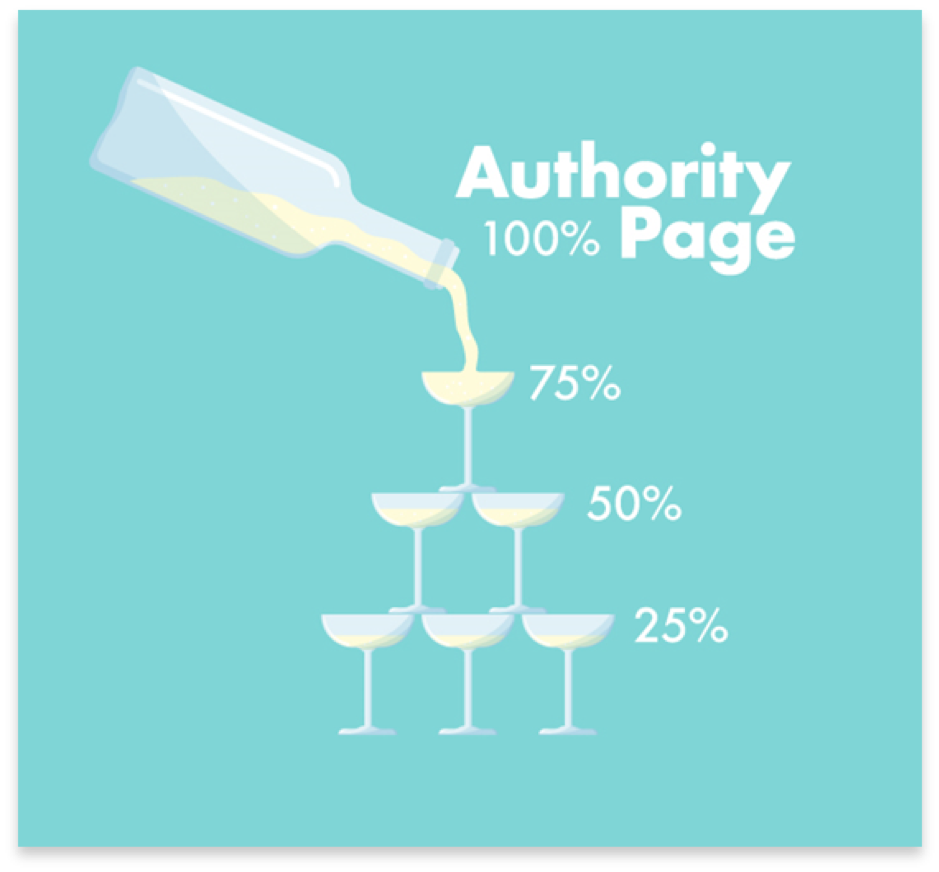
Test, test, test
As I’ve re-enforced throughout, a blanket strategy doesn’t exist.
It’s niche and industry dependent. It takes testing and iteration to understand what works and what doesn’t.
Some variables to consider whilst testing your anchor text strategy:
- Anchor text distribution
- Number of links pointing to main landing page
- Type of anchor text used
- Number of internal links per page
- Placement of internal links on a page
Conclusion
Content auditing and optimisation is a tried and tested way of improving your rankings.
I urge you to take something away from this webinar script and trial one (or all) of the methods outlined in this post to see the results you’ve been waiting for.
If you have any questions or want to find out more, you can shoot me an email ryan.roberts@zazzlemedia.co.uk or you can find me on LinkedIn using the QR code below.
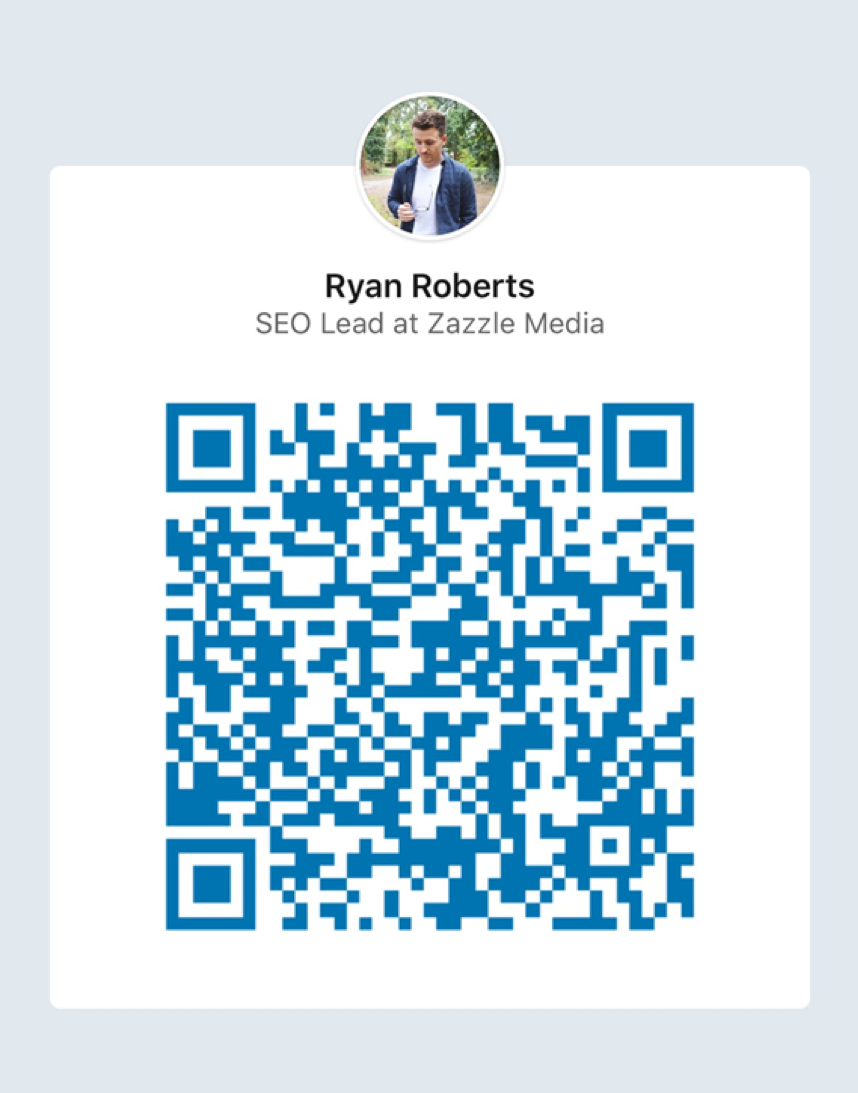
Sign up for our monthly newsletter and follow us on social media for the latest news.
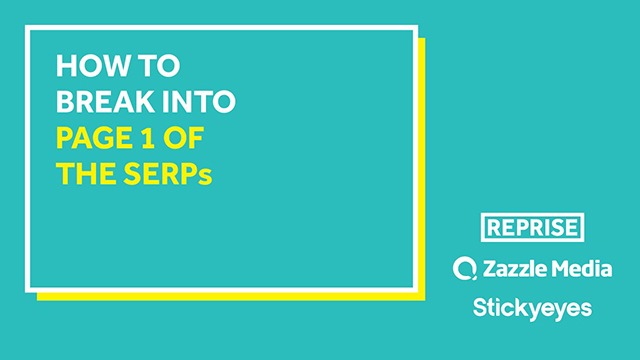




 Proudly part of IPG Mediabrands
Proudly part of IPG Mediabrands